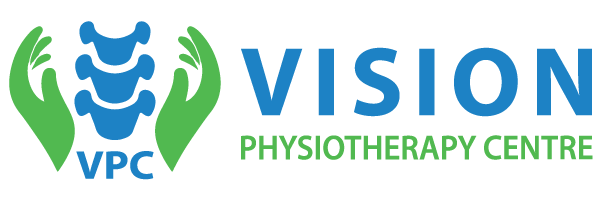Introduction
Neck pain is a common condition that affects people of all ages and backgrounds. It can be caused by a variety of factors, including poor posture, injury, and medical conditions such as arthritis. Neck pain can be debilitating, affecting a person’s ability to perform everyday activities and impacting their quality of life.
However, physiotherapy is an effective form of treatment for neck pain. Physiotherapy treatment can help to reduce pain and stiffness, improve mobility, and prevent further injury. In this article, we will discuss Physiotherapy Treatment of Neck Pain and the benefits of physiotherapy in treating neck pain and provide an overview of the different physiotherapy techniques used to manage this condition.
Causes of Neck Pain I Neck Pain Can Have a Variety of Causes
A. Poor Posture: Poor posture is a common cause of neck pain. Many people spend long hours sitting at a desk or hunched over a computer, which can put a strain on the muscles in the neck and upper back. Poor posture can also cause tension headaches and lead to long-term issues with the spine.
B. Injury: Neck pain can also be caused by injury, such as whiplash from a car accident or a sports-related injury. Injuries to the neck can cause damage to the muscles, ligaments, or nerves in the area, leading to pain and stiffness.
C. Medical Conditions: Certain medical conditions can also cause neck pain. These can include arthritis, herniated discs, or degenerative disc disease. Medical conditions such as fibromyalgia, multiple sclerosis, or spinal stenosis can also contribute to neck pain. It is important to identify the underlying cause of neck pain in order to determine the most effective course of treatment. A physiotherapist can help to assess the cause of neck pain and develop a personalized treatment plan to address the specific needs of the individual.
Assessment and Diagnosis for Prevent Neck Pain
To effectively treat neck pain, a physiotherapist will conduct a thorough assessment and diagnosis. This may include:
A. Physical Examination: A physical examination is often the first step in assessing neck pain. The physical therapist will evaluate the range of motion in the neck, as well as the strength of the muscles in the area. They may also palpate the neck to identify areas of tenderness or tightness.
B. Medical History: A patient’s medical history can also provide important clues as to the cause of their neck pain. The physiotherapist will ask about any previous injuries or medical conditions that may be contributing to the pain. They may also ask about the duration and the severity of the pain, as well as any other symptoms that may be present, such as headaches or tingling in the arms.
C. Imaging Tests: In some cases, imaging tests may be necessary to further evaluate the neck. This can include X-rays, MRI scans, or CT scans. These tests can help to identify any structural issues in the neck, such as herniated discs or bone spurs, that may be contributing to the pain. By conducting a thorough assessment and diagnosis, a physiotherapist can develop a personalized treatment plan that addresses the underlying cause of neck pain. This can help to reduce pain and improve mobility, allowing individuals to return to their daily activities with greater ease.
Physiotherapy Treatment of Neck Pain

Manual Therapy
Manual therapy techniques are a common part of physical therapy for neck pain . These techniques may include massage, joint mobilization, and stretching exercises. Manual therapy can help to pain relief and stiffness in the neck, as well as improve flexibility and range of motion.
Exercise Therapy
Exercise therapy is another important aspect of physiotherapy treatment for neck pain. The physiotherapist will develop a tailored exercise program to strengthen the muscles in the neck and improve overall mobility. These exercises may include stretches, resistance training, and aerobic activities.
Acupuncture
Acupuncture therapy is a traditional Chinese medicine technique that has been practiced for thousands of years. The therapy involves the insertion of thin needles into specific points on the body, known as acupoints. The belief behind acupuncture is that these acupoints correspond with the body’s energy channels, and by stimulating them, balance and flow can be restored to the body’s energy, also known as qi.
Acupuncture has been used to treat a variety of conditions, including chronic neck pain, anxiety, and infertility, and has gained popularity in the Western world as a complementary therapy. Despite its effectiveness in treating many ailments, acupuncture is not without controversy, with some skeptics questioning its validity and the mechanism behind its effectiveness.
Advanced Physiotherapy Treatment of Neck Pain
PEMF
PEMF therapy is an acronym for Pulsed Electromagnetic Field therapy, which is a non-invasive treatment method that uses electromagnetic fields to improve cellular function and promote healing. The therapy works by sending low-frequency electromagnetic waves to the body’s tissues and cells, which can increase blood flow, reduce inflammation, and enhance cellular regeneration. It has been used to treat a variety of medical conditions, such as chronic pain, depression, and osteoarthritis..
Shockwave Therapy
Shockwave therapy is a non-invasive medical treatment that uses high-energy sound waves to stimulate healing in the body. The therapy works by directing short, intense bursts of acoustic energy at the affected area, which can increase blood flow, reduce inflammation, and stimulate tissue regeneration.
Shockwave therapy has been used to treat a variety of medical conditions, such as chronic pain, plantar fasciitis, and tendinitis. The therapy can be delivered through a handheld device that is applied to the skin or by immersing the affected body part in a water bath. It is important to consult with a healthcare professional before undergoing shockwave therapy to determine if it is an appropriate treatment option for your condition.
Posture Correction
Poor posture is a common cause of neck pain. Physiotherapy treatment can help to correct posture and reduce the risk factors of future injury. This may involve exercises to strengthen the muscles in the upper back and neck, as well as education on how to maintain proper posture during daily activities.
Which Therapy Is Best For Neck Pain?
There are various types of physical therapy for neck and shoulder pain, and the best therapy depends on the underlying cause of the pain. For example, physical therapy can be effective for treating neck pain caused by muscle strain or injury. Chiropractic therapy may be beneficial for neck pain caused by spinal misalignment. Massage therapy can help reduce tension and inflammation in the neck muscles. Additionally, acupuncture and yoga can also provide relief from neck pain. It is important to consult with a healthcare professional to determine the best therapy for your specific condition, as well as to ensure proper diagnosis and treatment.
Education and Advice for Physical Therapy Treatment
Physiotherapists can also provide education and advice on how to reduce neck pain from recurring in the future. This may include tips on good posture, ergonomics, and exercise programs to maintain strength and flexibility in the neck muscles. Additionally, physiotherapists can educate patients on ways to manage neck pain at home.
This can include self-massage techniques, stretches, and exercises to do at home. They may also recommend hot or cold compresses to help alleviate pain and reduce inflammation.
Education on proper ergonomics is also important to prevent neck pain from recurring. Physiotherapists can guide how to set up a workspace or adjust the positioning of a computer monitor to reduce strain on the neck and upper back.
Finally, exercise programs are an important component of preventing neck pain from recurring. A physiotherapist can design a tailored exercise program to maintain strength and flexibility in the neck muscles. This can include exercises to improve your posture, and strengthen the muscles of the upper back and neck, and increase overall mobility.
Conclusion
In this blog, we’ve discussed about Physiotherapy Treatment of Neck Pain. Physiotherapy is an effective form of treatment for neck pain. Physiotherapists use a variety of techniques, including manual therapy, exercise therapy, posture correction, and education and advice, to manage neck pain and improve quality of life.
It is important to seek the help of a physiotherapist when experiencing neck pain, as they can provide a personalized treatment plan based on an individual’s specific needs with neck pain physiotherapy machine. With the guidance of a physiotherapist, individuals can improve their posture, strengthen their muscles, and prevent future neck pain from occurring. The positive impact of physiotherapy on quality of life cannot be overstated. By reducing pain and improving mobility, physiotherapy allows individuals to return to their daily activities with greater ease and confidence. They can enjoy a better quality of life, with less pain and greater freedom of movement with no neck physiotherapy side effects.
Written by.
Dr. Saiful Islam, PT
BPTh (DU), MPTh (Orthopedics) – NIPS, India
PG Certificate in Acupuncture, India
Specially trained in Ozone Therapy, USA and Ozone Forum, India.
Physiotherapy Consultant, Vision Physiotherapy Center.
To consult: 01760-636324 , 01932-797229 (9:00 AM to 9:00 PM) and make an appointment.
Our Facebook page: Vision Physiotherapy Center




